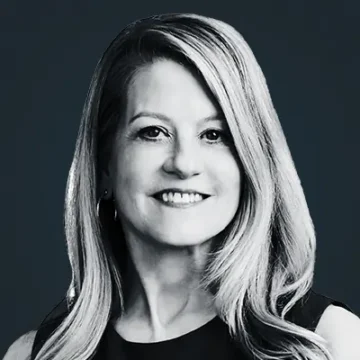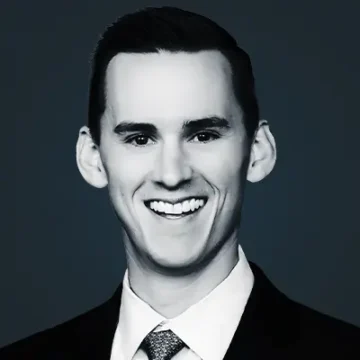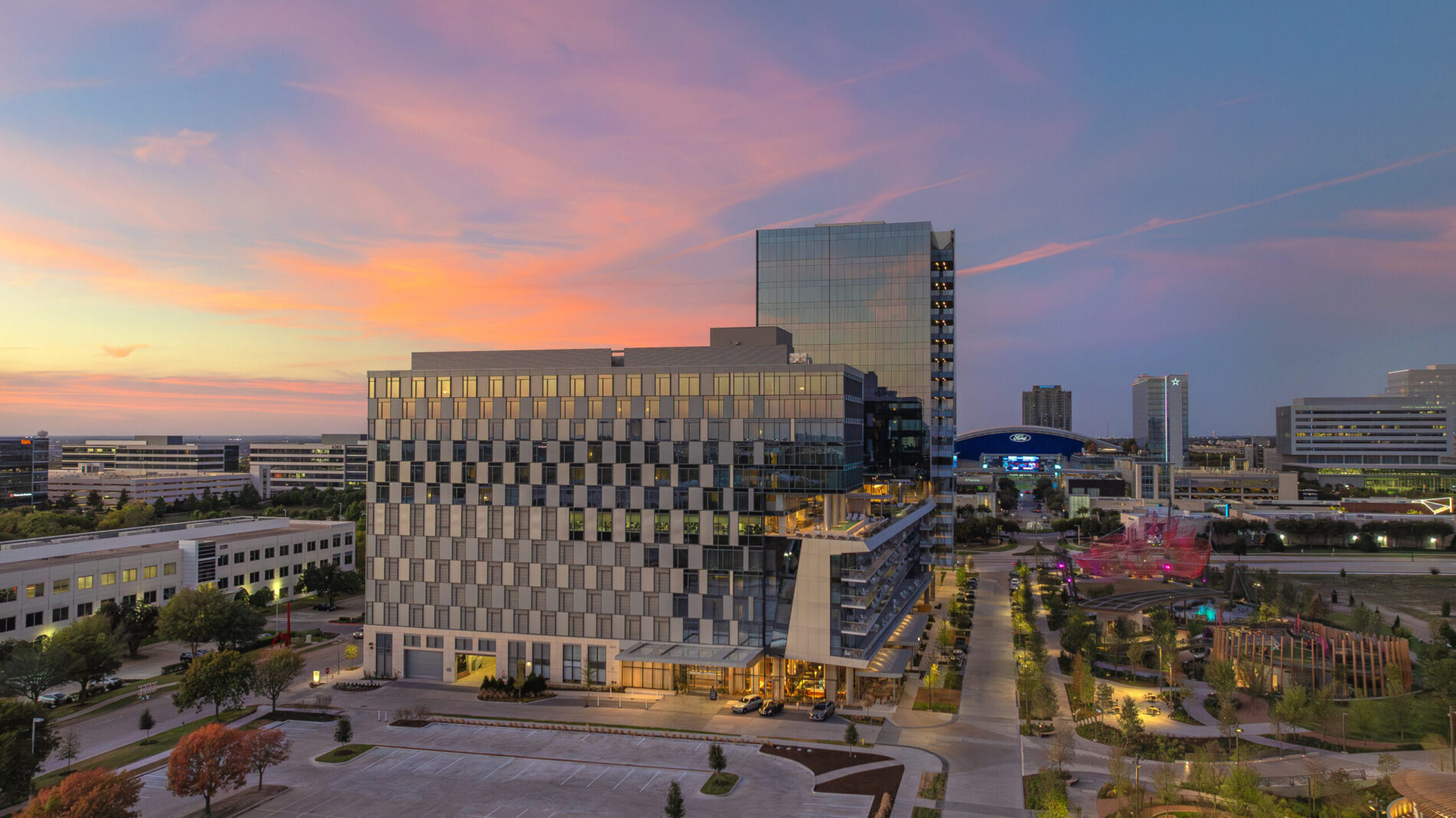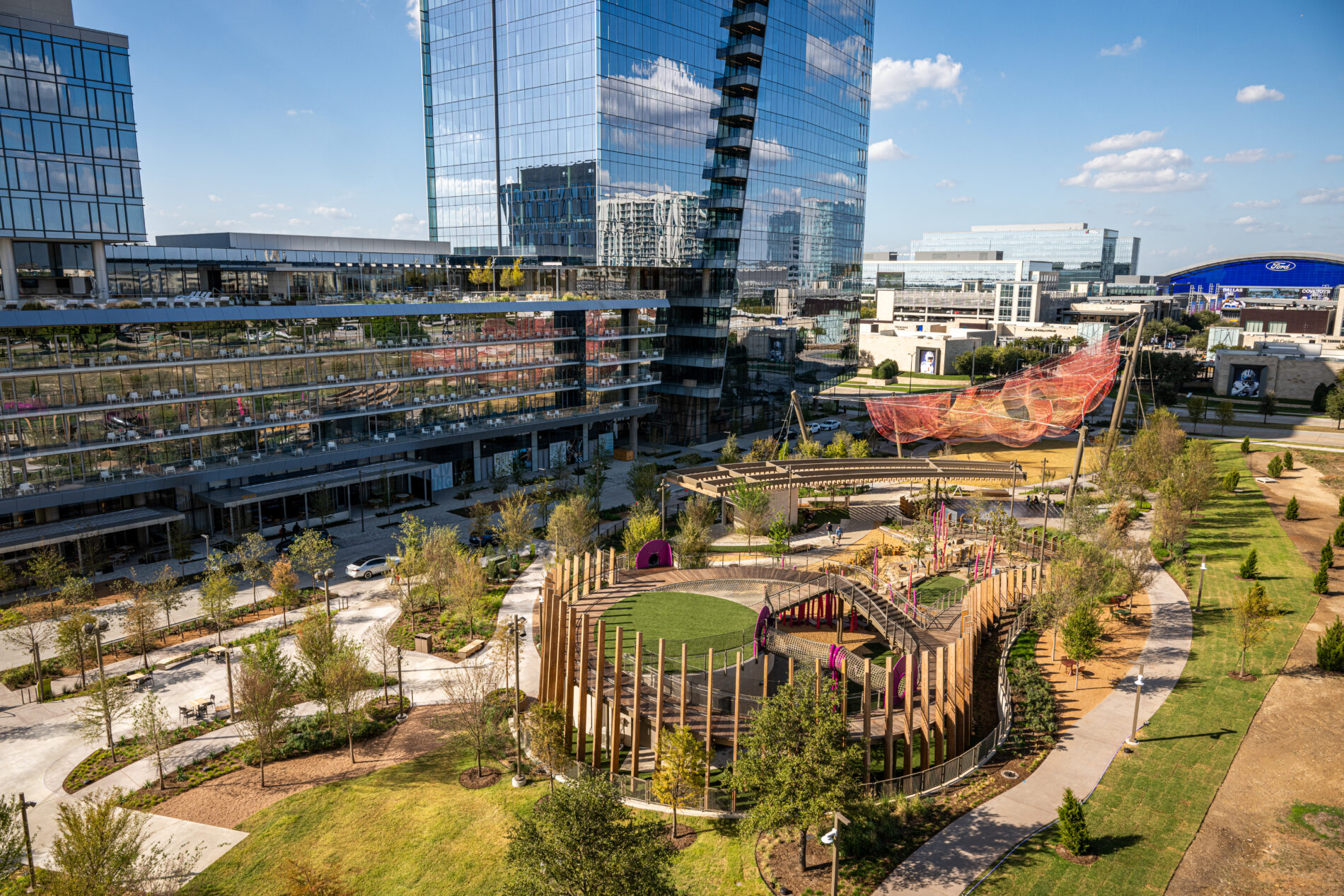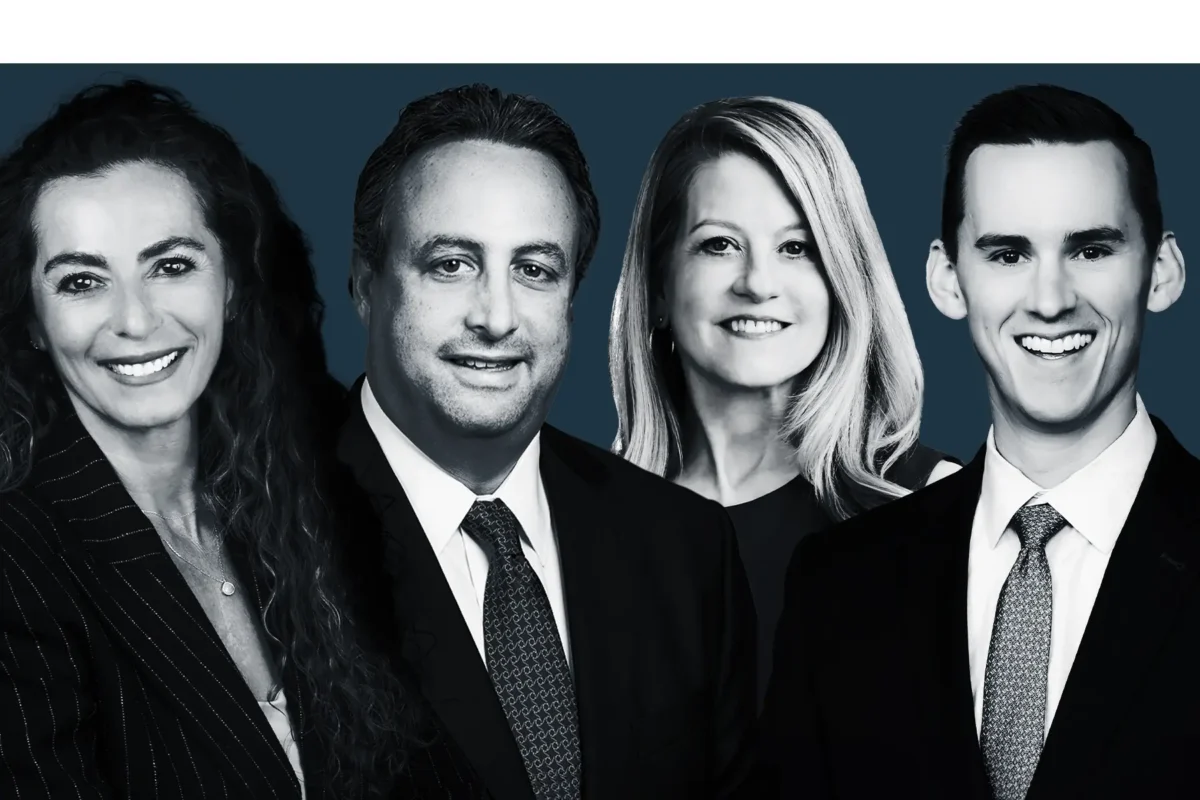
CRE Outlook: What to Expect For Dallas’ Office Market in 2025
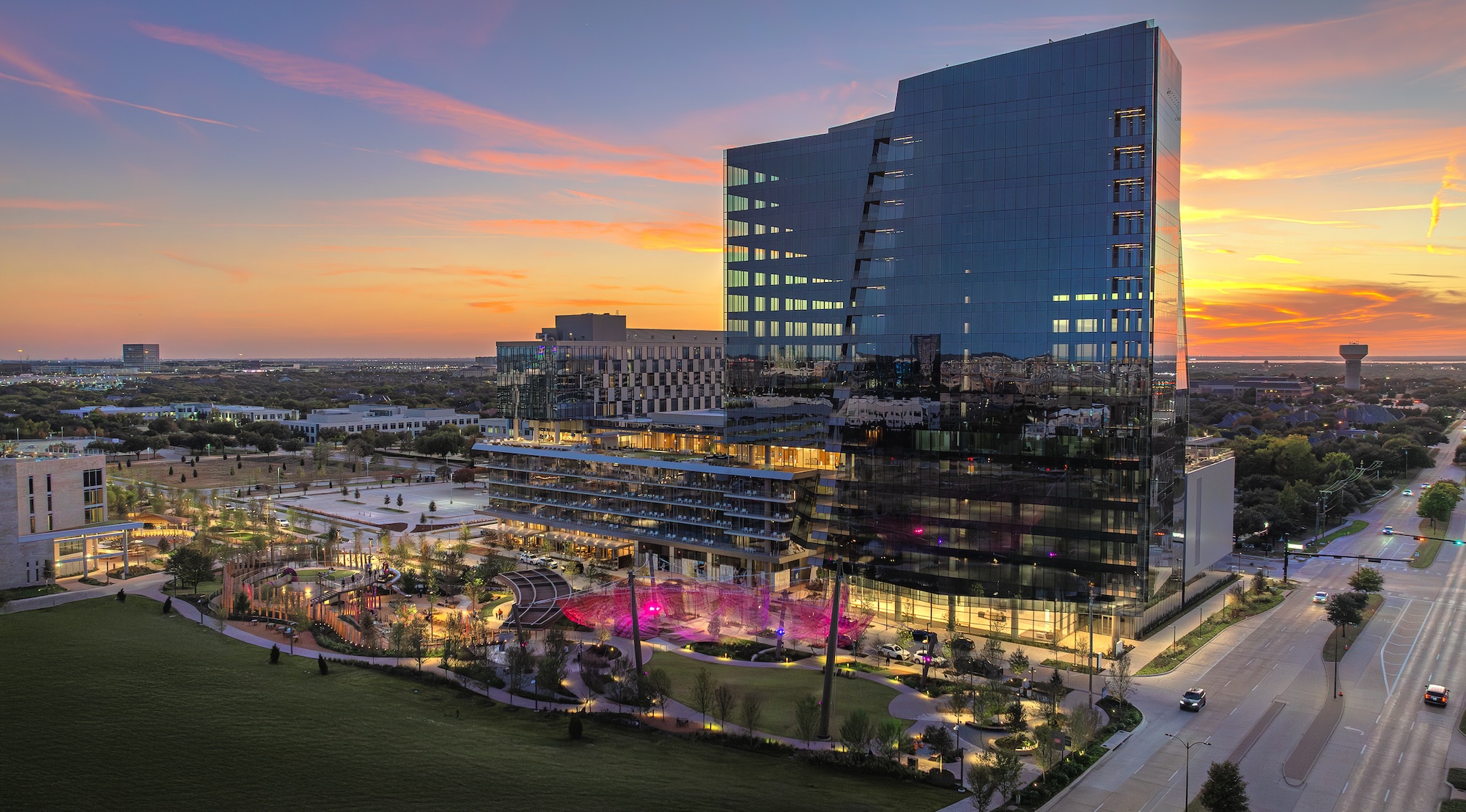
Read the story on D Magazine:
The last five years for the office asset class has felt like something out of a Twilight Zone episode. Strong fundamentals in 2019 morphed into uncertainty about next steps as the onset of a pandemic called the value of office space into question. What followed has been a cavalcade of opinions, predictions, and headwind shifts as employers and market players have shifted strategies to breathe new life into office use. Now, as HALL Group’s Kim Butler puts it, companies are “moving away from temporary fixes.” They are instead opting for long-term visioning—meaning 2025 marks a new chapter for Dallas’ office market.
As we move into the new year, D CEO asked top North Texas commercial real estate brokers to share their thoughts on 2024 performance as well as what 2025 could bring. We’ll be sharing their insights over the next few weeks. We started last week with thought leaders in the industrial and data center sectors, and we’re turning our attention this week to the office sector. We gathered insights from Stream Realty Partners’ Randy Cooper, HALL Group’s Butler, Savills’ Jihane Boury, and Citadel Partners’ Mac Morse.
Here’s what these power brokers had to say:
Randy Cooper, Executive Vice Chairman, Stream Realty Partners
D CEO: How would you rate 2024? Did the market perform better, worse, or about as you expected?
RANDY COOPER: “2024 was a mixed bag of same old same old and bright light and optimism ahead. The market performed better than expected. Our team was able to consummate some of the largest and most opportunistic transactions in the city.”
D CEO: What was your biggest deal of the year, and were there any particular challenges in getting it across the finish line?
COOPER: “The Sidley Austin transaction at 23Springs. Working with great, experienced partners like Sidley and Granite Properties helped solve issues as they arose.”
D CEO: What’s the most interesting trend you’re seeing in your sector?
COOPER: “The upcoming lack of Class A space in Uptown and the amount of time it is going to take developers to deliver new product as credit for office buildings is still extremely difficult to come by.”
D CEO: In your area of specialty, which submarkets or specific property types are performing well and which are struggling?
COOPER: “Uptown and Preston Center are as dynamic as any big city in America and require in-depth knowledge of the market to uncover all alternatives. Plano/Legacy, Las Colinas, and Richardson still are lagging, but the best assets in those markets are begging to come back alive.”
D CEO: What are your predictions for the biggest challenges and opportunities in 2025?
COOPER: “The biggest challenge is the lending market for new office product. We will see a time shortly whereby tenants want to move to newer, albeit expensive, product. However the choices just may not be there for them to move.”
D CEO: Anything else you’d like to add?
COOPER: “I think we will continue to see an influx of professional service firms that want to be here and will pay the necessary rent to be in new, Class A product. We no longer are an inexpensive market—in fact, we are among the more expensive markets in particular pockets, but the companies will come because Dallas is a market they must have a presence in.”
Kim Butler, Executive Vice President-Leasing, HALL Group
D CEO: How would you rate 2024? Did the market perform better, worse, or about as you expected?
KIM BUTLER: “Fortunately, 2025 has started off much better than 2024. Being on the office side of leasing, the ‘work from home’ trend during and after COVID has left the office building sector in a kind of ‘no-man’s land.’ While DFW has seen a higher percentage of people returning to the office compared to the rest of the country, large national companies faced challenges in implementing different policies for different regions.
“Just as companies were gaining confidence in requiring employees to return to the office and making longer-term decisions regarding their office space, the rise in interest rates and the uncertainty of an election year disrupted those plans. The first half of 2024 performed worse than expected, but in hindsight, this was not surprising given these factors.”
D CEO: What was your biggest deal of the year, and were there any particular challenges in getting it across the finish line?
BUTLER: “We were very excited to land Chobani as a tenant in the new Tower at HALL Park in Frisco. They are such an interesting company with great leadership at all levels. It has been a pleasure working with their team—they are both professional and collaborative.
“Chobani is designing an impressive full-floor space in The Tower, complete with an experience center and tasting room where clients and prospective clients can experience and engage with their brand in the best possible way.
“Generally, deals are taking more time to get to the finish line with more departments involved in providing input and requiring approvals for both the transaction and the space. But this transaction came together fairly quickly and smoothly, which is a testament to the exceptional team at Chobani.
“Chobani will move into the space this summer, and we are delighted to welcome them to HALL Park.”
D CEO: What’s the most interesting trend you’re seeing in your sector?
BUTLER: “The most interesting trend we are seeing is the shift toward creating ‘experience centers’ within tenant spaces for marketing to, and entertaining, clients. These spaces are distinct from the employee work areas, which also incorporate a level of hospitality.
“Experience centers are carefully branded to reflect the company’s identity and often feature sophisticated audiovisual to enhance the customer/client experience. Often, specialized consultants who focus on designing these centers collaborate with the architect responsible for the overall space to create a dynamic, sales-oriented experience area that aligns with the design of the entire office.
“These areas also incorporate an elevated level of hospitality, allowing clients to enjoy meals or happy hours directly within the tenant’s space.”
D CEO: In your area of specialty, which submarkets or specific property types are performing well, and which are struggling?
BUTLER: “It is no secret that the office properties performing well are the higher-end Class A or AA projects with amenity-rich packages. Employers are looking to developers and property owners to create environments that attract employees to the office, offering services and conveniences at their fingertips.
“They want multiple dining options, fitness and wellness areas, and lounge spaces where employees can step out of their office space while continuing to work productively. There is also a growing demand for outdoor spaces with access to nature for walking meetings, break time, or for team social interactions, featuring games and areas for food and drinks.
“Companies are particularly drawn to mixed-use properties that provide access to hotels, residential spaces, restaurants, and retail options adjacent to where they office. Properties offering these types of amenities are winning.
“In contrast, Class B and stand-alone office properties are struggling. In some instances, the occupancy level and rents do not justify the owner making a large capital investment to renovate or add amenities.”
D CEO: What are your predictions for the biggest challenges and opportunities in 2025?
BUTLER: “The good news is that companies are growing, and business is robust, which in return means hiring more people and making longer-term decisions about their headcounts and how to best accommodate their teams. We are seeing growth across companies of all sizes, with a strong focus on creating productive and high-quality environments for employees.
“There seems to be a renewed appreciation for the power of collaboration, and companies are responding by selecting new office spaces or retrofitting their existing ones to include more areas for casual team interactions or collaborative work outside traditional offices or workstations. There is an increase in huddle rooms for meetings, casual seating areas where teammates can share ideas, and large, open break areas where people can celebrate ‘wins’ together.
“Companies are no longer creating hospitality-oriented spaces solely for clients but are also focusing on creating welcoming environments for their team members. I believe a significant opportunity for the office business in 2025 lies in the fact that companies are moving away from temporary fixes. They are investing more in both their people and their real estate, demonstrating a greater willingness to allocate capital. I also expect we will see an increase in relocations this year.”
Jihane Boury, Vice Chairman, Savills-Dallas
D CEO: How would you rate 2024? Did the market perform better, worse, or about as you expected?
JIHANE BOURY: “The Dallas-Fort Worth commercial real estate market in 2024 ended strong, driven by the region’s diverse economy, growing population, and business-friendly environment. There was steady demand for office tenants, particularly in the professional services, healthcare, and financial sectors, and more activity is expected in 2025.
“The average office rental rates increased modestly and are expected to rise by 3 to 5 percent this year. Finally, several major new office projects are under construction, including 23Springs in the Uptown submarket. This project is developed by Granite Properties and will be the new home for our firm, Savills, in August of this year.”
D CEO: What was your biggest deal of the year, and were there any particular challenges in getting it across the finish line?
BOURY: “One of our notable transactions in 2024 was a three-floor lease for a prominent professional services firm in Uptown. Many tenants continue to invest in their workspaces as a talent retention and recruitment tool, however, the greatest challenge lies ahead, as landlords continue to face hurdles in securing financing for their buildings.
“Despite this, we remain optimistic about the Dallas-Fort Worth market. Newly developed properties that offer abundant amenities and walkability are expected to lease up quickly, outpacing other products in the market.”
D CEO: What’s the most interesting trend you’re seeing in your sector?
BOURY: “An interesting trend is that overall office availability ended 2024 at 27.6 percent, which was 250 basis points lower than the 30.1 percent office availability reported at year-end 2023. Savills tracks availability instead of vacancy, which accounts for all available spaces being marketed for lease, including subleases. The slight shrinking of availability is mainly due to the uptick in leasing activity, even though there is new office product coming online in 2025 with 7.6 million square feet under construction in areas such as Uptown/Turtle Creek and Frisco.
“Despite elevated vacancy rates, the average market rents remained relatively stable, with a 1.7 percent growth rate that surpassed the national average. The Turtle Creek/Uptown area boasted the highest rents, ranging from $60 to over $100 per square foot gross.
“Another continued trend was the shift in demand toward newer buildings. This is a combination of two leasing trends: flight to quality and flight to capital. Properties less than three years old experienced a positive net absorption of 13.5 million square feet, while older buildings saw a negative net absorption of 15 million square feet. Most tenants are seeking newer, quality space (flight to quality), while also relocating to buildings with stable financing that can provide the necessary capital spend for tenant improvements (flight to capital).
“Notably, the Dallas-Fort Worth office market led the country in attendance growth in 2024, outpacing other cities.”
D CEO: In your area of specialty, which submarkets or specific property types are performing well and which are struggling?
BOURY: “We have seen a surge in successful lease-ups of older buildings that previously struggled to attract tenants mainly due to a lack of amenities. The higher rental rates for new buildings haven’t discouraged tenants from opting for the latest product, highlighting the flight to quality trend. Instead, higher rates have prompted tenants to explore more efficient office design solutions and leverage shared amenities to minimize their footprint and optimize space.
“Properties with limited walkability and sparse amenities continue to struggle. However, these buildings remain a viable option for tenants who are prioritizing cost savings. For these tenants, a basic office presence is sufficient, and they are driven primarily by finding a financially sustainable solution.”
D CEO: What are your predictions for the biggest challenges and opportunities in 2025?
BOURY: “Dallas-Fort Worth attracts multiple business sectors, with no specific type of tenant driving leasing activity, which means there is plenty of opportunity for growth. The market has also become a very important financial center nationally as Goldman Sachs, Bank of America, and Wells Fargo are all developing office campuses here. Additionally, multiple AmLaw 100 law firms have been opening or expanding offices in the market.
“Finally, corporate headquarters relocation activity slowed over the past 1 to 2 years, but I believe we can expect that to increase again in 2025, especially since Texas is a business-friendly state and the market offers a lower cost of living than major cities in New York and California.”
D CEO: Anything else you’d like to add?
BOURY: “Dallas-Fort Worth is poised for a robust recovery in 2025, driven in part by a shifting tide of employees going back to the office. Recent increases in rush-hour traffic suggest that people are gradually returning to in-person work.
“While some may view this trend as a desire to revert to pre-pandemic norms, I believe it reflects a fundamental human need for connection and community. Flexibility will undoubtedly remain a staple of modern work life, but the office and the unique culture it creates has been impaired for too long. As we strive for normalcy, it’s clear that in-person collaboration, learning, mentorship, and camaraderie are essential to our collective success and fulfillment.
“The office market’s influence extends far beyond its own boundaries, impacting numerous adjacent businesses and industries. Ultimately, our shared prosperity depends on the strength of our interconnected communities and nowhere is this done better than at the office.”
Mac Morse, Partner, Citadel Partners
D CEO: How would you rate 2024? Did the market perform better, worse, or about as you expected?
MAC MORSE: “2024 was a strong year, both personally and for Citadel Partners as a whole. In fact, it was one of our best years to date. Compared to 2023, the market was more predictable, providing greater certainty in decision making for the corporate users and landlords that we represent. This level of stability has been somewhat rare in the post-COVID era. Additionally, many Fortune 500 companies made a significant push to bring employees back to the office, creating a positive ripple effect across the market. Ultimately, this momentum proved to be a net positive.”
D CEO: What was your biggest deal of the year, and were there any particular challenges in getting it across the finish line?
MORSE: “We played a huge role in negotiating favorable lease terms and securing economic development corporation incentives for Dallas-based Fibergrate Composite Structures. The company was looking for a new campus-like environment that could grow as the company continued to expand. Fibergrate also had two years left on its existing lease, creating a critical timing element to the deal. We spent over nine months searching for the right space. After working with JaRyCo Development (owner of The Farm in Allen) and the Allen EDC, Citadel Partners secured a large EDC package from the city and negotiated almost a year of free rent while also attaining top-of-building signage for Fibergrate. We also negotiated a deal that allowed Fibergrate a ramp-up period for the new/higher rental structure. Fibergrate will move into its new space—brand-new building featuring modern amenities and flexible workspace options—in Q2 of 2025 with enough incentives to move into its newly leased space without contingent liability from its existing lease.”
D CEO: What’s the most interesting trend you’re seeing in your sector?
MORSE: “One of the most interesting trends in the office sector is the increasing emphasis on ‘hospitality-driven’ space. Both corporate decision-makers and property owners are striving to create environments that blend the elements of traditional office space, remote work flexibility, and the atmosphere of coffee shops. One of the ultimate goals is to make the office feel more dynamic, engaging, and experience-driven, encouraging people to return and ultimately retain the best talent.”
D CEO: In your area of specialty, which submarkets or specific property types are performing well and which are struggling?
MORSE: “Properties in well-located core submarkets are seeing stronger demand—particularly those built or renovated post-2015. The owners continuously rising to the top provide buildings that go beyond just offering office space; they create a comprehensive experience for tenants with amenities that genuinely enhance convenience and daily workflow. Features like Amazon drop-off lockers, Tide Dry Cleaners, mobile car detailing services and high-quality tenant lounges are general amenities that set these properties apart. More than ever, attention to detail and thoughtful execution are proving to be major key factors in winning deals and staying ahead of the competition.
“Even a well-located and amenity-rich office property can struggle if ownership groups or lenders are facing challenges related to maturing loan deadlines and the complexities of today’s debt market. The financial landscape remains a critical factor in determining whether a property thrives or falters against the headwinds. The groups who have been successful over the past couple of years are truly threading a needle with greasy fingers.
D CEO: What are your predictions for the biggest challenges and opportunities in 2025?
MORSE: “From a macroeconomic standpoint, broader economic trends have typically impacted me indirectly and only after the fact, which softens the blow. However, the current tariff landscape is having a more immediate and tangible impact on both the office and industrial sectors. While it’s a concern, it’s nothing that can’t be navigated—our market has proven time and again to be resilient. We represent a number of corporate clients with offices and warehouses across the country, and through my interactions with real estate professionals nationwide, I’m constantly reminded how fortunate I am to be in Texas. DFW, in particular, remains well-insulated with strong fundamentals that aren’t out of whack. The region’s growth, driven by population expansion and increasing residential development, continues to create significant opportunities. I’m optimistic about what 2025 holds for North Texas.
That said, there will always be challenges and uncertainties in the market—some real, most just noise. At the end of the day, you can only control what’s within your reach, and I believe that is the biggest opportunity in itself. I have a mantra that I’ve borrowed from my grandmother and other mentors: don’t get too high or too low. Don’t read your own press clippings, and if you’re doing the right thing, it will work out the way it is supposed to.”
Scroll down for more happenings at HALL Park


